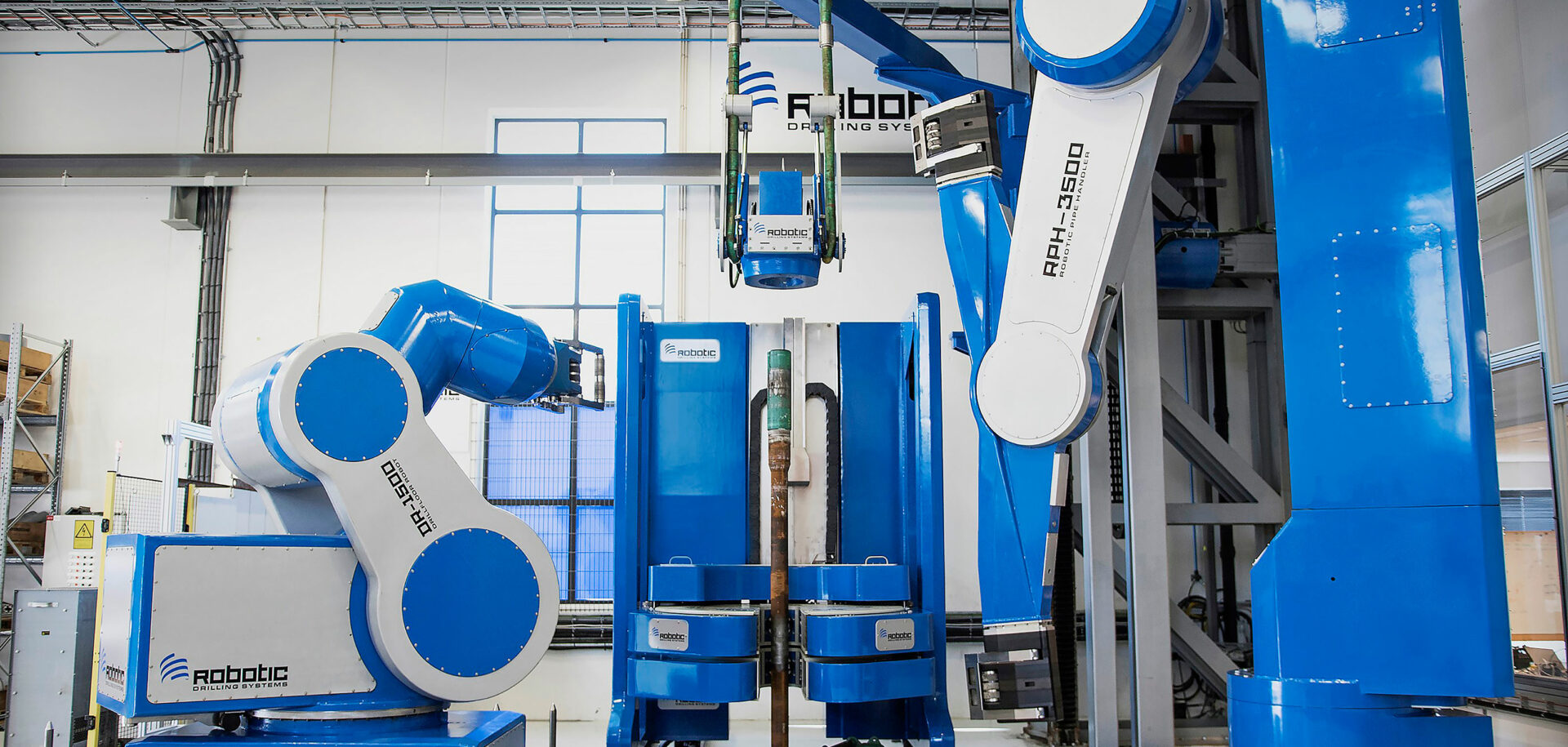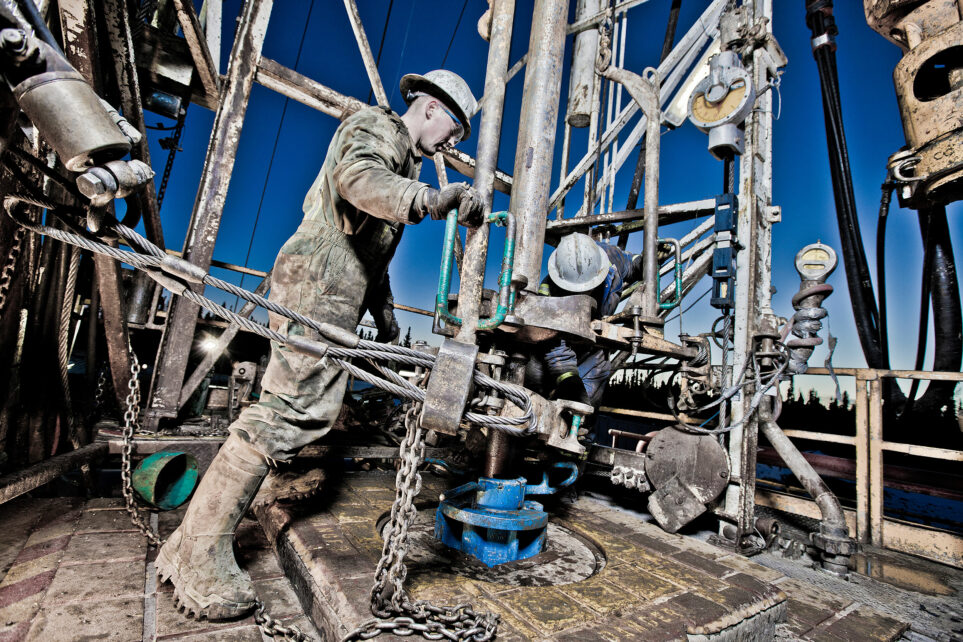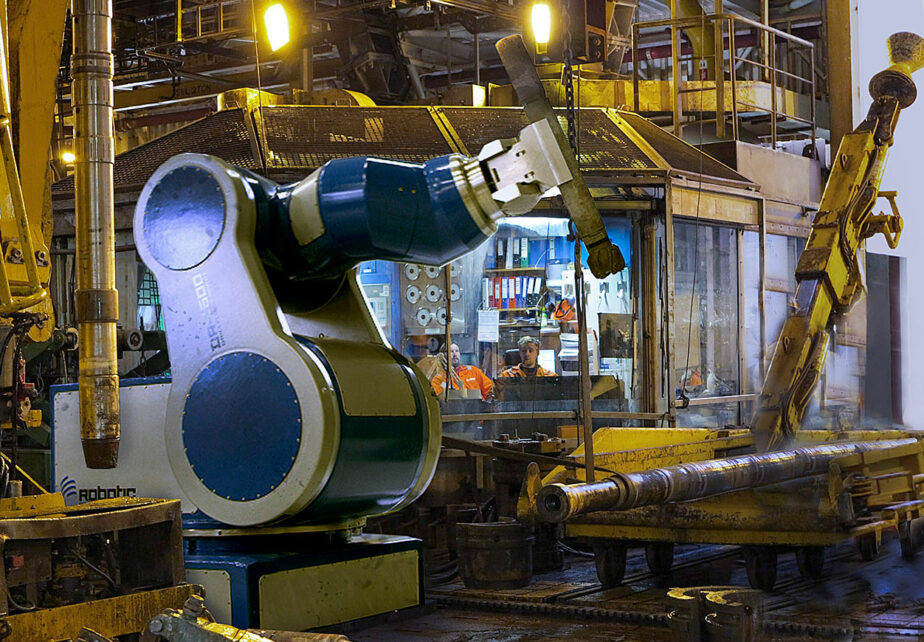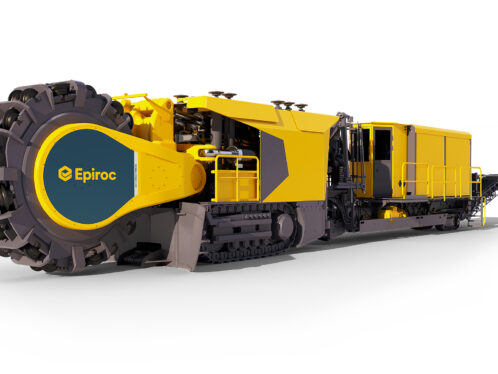
Robots in the oil-drilling arena
Norwegian robotics company Robotic Drilling Systems A/S is changing the face of oil drilling with robots that can substitute for humans on the most dangerous “roughneck” tasks and at the same time realize huge cost savings.
Robots are pervasive in industry. But the oil and gas sector, with its continuously flowing profits, has been notoriously late to the game. After a decade of development, Robotic Drilling Systems A/S, a small, 30-person R&D and robotics company in Sandnes, Norway, is upping the ante with a range of four high-precision drill-floor electric robots to automate harsh tasks traditionally performed by humans in the dangerous “red zone” on oil rigs. The industry, keen on staying profitable in the face of slumping oil prices, is watching closely.
With robotic drill floor operations the future is here.
Jimmy Bostrøm
chief operating officer
Robotic Drilling Systems (RDS), headquartered near Stavanger, Norway’s oil capital, is working hard to fill this technological vacuum. In the past decade, RDS (formerly Seabed Rig) has developed and refined four industrial robots that make drilling for oil faster, smarter, safer, and more cost-effective when installed on the drill floor. Accurate and speedy, RDS robots feature a high degree of autonomous control.
A full offering
Robotic Drilling Systems A/S has been working closely with SKF Norway since 2014. The collaboration started with the development of a customized high-force actuator for RDS’s robotic electric roughneck. This robot applies the torque to pipe connections, a task previously done by humans. It’s a task with exceedingly tight space constraints, and the SKF technical staff came up with an appropriate solution.
“We also supply a variety of standard SKF products, comprising bearings and accessories, but also lubrication systems,” says Morten Nilsen, key account manager, industrial market, SKF Norway.
They include a robotic pipe handler, a drill floor robot, an electric roughneck and a multi-size elevator. This equipment combines to manoeuvre pipes and other drill-string components into the correct position and with the proper torque.
“It looks majestic, doesn’t it?” says Jimmy Bostrøm, chief operating officer of RDS, standing next to the company’s robotic pipe handler, RPH 3 500, a steel contraption that could double as an amusement park ride as it flips a pipe from horizontal to vertical position.
“The precision is to within one millimetre on a three-metre arm lifting more than 3.5 tonnes,” he says. “I know of no other robotic system on the market that can handle pipes like this.
Robotic Drilling Systems
Robotic Drilling Systems A/S, or RDS, from Sandnes, Norway, uses robotic technology for completely unmanned drill floor operations on oil platforms.
The company was formed in 2003 as Seabed Rig but soon identified a more pressing need for robotic systems on land and on oil platforms.
RDS is supported by the Research Council of Norway, Shell, ConocoPhillips, Total, ENI and Innovasjon Norge. Two commercial robotic installations are currently in place. In August 2017, the main shareholders of RDS agreed to sell 100 percent of the RDS shares to Nabors Industries.
“Still today, the pipes that are used for drilling through the earth’s crust to extract oil and gas are manhandled and made up by a special breed of oil worker known as ‘roughnecks’,” Bostrøm says. “This is a harsh, dirty, moist and dangerous environment, and the profession [of roughneck] hasn’t changed much over the years. But with robotic drill floor operations the future is here.”
RDS is a media darling in Norway. Norway’s Dagens Næringsliv newspaper reports how RDS’s new drilling robot can “do the trick” in helping oil companies achieve better profitability in the face of sinking global oil prices – currently at USD 50 per barrel, down from USD 100 per barrel a few years ago.
“It’s about keeping operating costs down and efficiency up if you’re going to win,” says Bostrøm, echoing a mantra felt across many industries.
The New Era of Automation, a World Economic Forum white paper from March 2017, reports how RDS robotic drilling systems can save up to 40 days per year per rig – a substantial savings considering that the cost of operating a typical offshore drilling rig can easily climb to USD 500,000 per day.
With its cutting-edge expertise and lots of goodwill from the industry, RDS is now reaping the commercial benefits from its R&D. In May 2016, a robotic pipe handler was sold to a customer on a rig outside Europe for the first time. A subsequent commercial sale was made to Odfjell Drilling in October 2016.
“Our technology has a proven track record,” says Bostrøm. “It is a very exciting phase of the business right now. Not only can we deliver a working product, but we can also offer a one- to two-year return on the investment, a significant savings for drilling operators, given the current market conditions. Scaling up production to meet demand is not a problem either, since we only deal with premium suppliers with a high delivery capacity. Within a few years, our goal is to supply 50 robots a year to our customers.”







